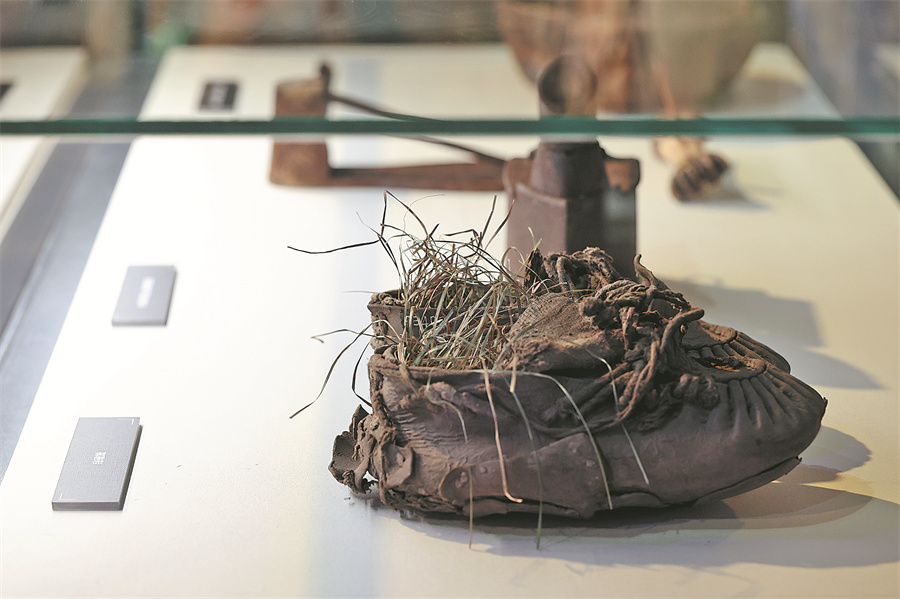Digging for true war stories


After they failed to find Jiang and his family members, Japanese invaders set fire to his house, causing the saber's handle to burn away, leaving only the blade. In 2006, the saber was donated to the exhibition hall.
To confirm if it was the actual saber that once belonged to Yang, staff from the hall immediately took it to Liu Xishun, in his 90s living in Shenyang, Liaoning, who once worked as an orderly for Yang.
"Liu was very excited at first glance and told us it was the saber Yang held," says Zhou.
"He said at that time, Yang rode a horse and had this large saber slung on his left side and a Mauser military pistol on his right. It was quite imposing! Liu brandished this saber and began singing the army song composed by Yang in 1938," says Zhou.
To mark the 80th anniversary of victory in the war against Japanese aggression, A Special Exhibition of Relics from the Sites of the Northeast United Resistance Army opened at the Museum of the Communist Party of China in Beijing, putting the remarkable efforts of the army in the spotlight through 1,289 artifacts, many of which were unearthed from the Hongshilazi site, as well as the Jiguanshan site in Harbin, Heilongjiang province, another significant base for the resistance army.
The exhibition also restores and replicates the army's living environment from spring to winter.
























